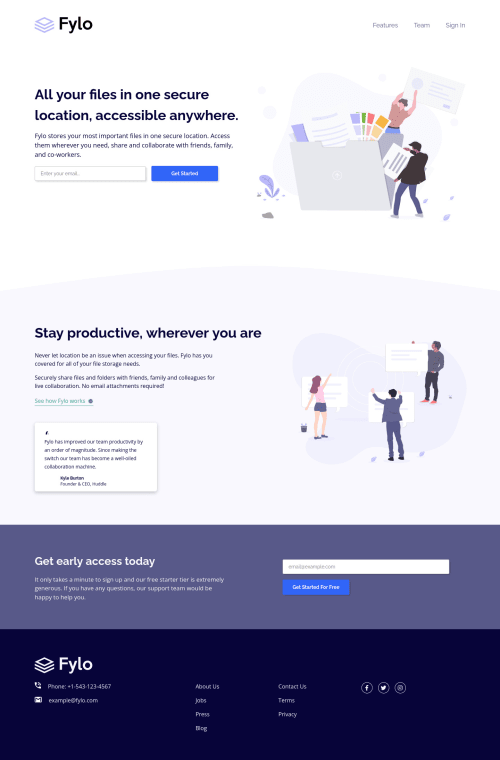Landing Page with Two Column Layout Built Using CSS Grid & Flexbox

Solution retrospective
Feedbacks and tips will be greatly appreciated! Thanks!
Please log in to post a comment
Log in with GitHubCommunity feedback
- @PhoenixDev22
Hi arey,
Congratulation on finishing this challenge. Great job on this one! I have few suggestions regarding your solution:
HTML
- look up a bit more about how and when to write alternate text on images. Learn the differences between decorative/meaningless images vs important content like For decorative images, you set an empty
altto it with anaria-hidden=”true”to remove that element from the accessibility tree. This can improve the experience for assistive technology users by hiding purely decorative images.
- Forms with proper inputs and labels are much easier for people to use. To pair the label and input, one way is an explicit label’s
forattribute value must match its input’sidvalue. Input fields without accompanying labels can lead to accessibility issues for those who rely on screen readers. If a screen reader comes across an input field without a label it will try to find some accompanying text to use as the label. (To hide the label visually but present for assistive technology, you may usesr-onlyclass ).
- Never use
<div>and<span>alone to wrap a meaningful content. Just keep in mind that you should usually use semantic HTML in place of the div tag unless none of them (the semantic tags) really match the content to group together like for .name .title.
- Instead of using a generic div to wrap the social links
class= social-link, you put your links within an unordered list structure so that a screen reader will read out how many things are in the list to give visually impaired users the most information possible about the contents of the navigation.
- You need to manually add an aria-hidden attribute to each of your icons.
Aside these, you did great work. Hopefully this feedback helps.
Marked as helpful - look up a bit more about how and when to write alternate text on images. Learn the differences between decorative/meaningless images vs important content like For decorative images, you set an empty
- @DavidMorgade
Hello Arey, pretty good job with the responsiveness of your solution, it looks pretty good, congratulations
One thing that I would probably add is some
transitionsto yourhovereffects, it will make your page look more modern and smoother and its like a line or two of code for your buttons and links.You could use ´transition: filter 0.5s ease´ for your buttons, and
transition: color 0.5s easeI would also like to say that you nailed with the html tags for your projects, maybe having your testimonial as an
articlewould fit even more semantically.Hope my feedback helps you!
Marked as helpful
Join our Discord community
Join thousands of Frontend Mentor community members taking the challenges, sharing resources, helping each other, and chatting about all things front-end!
Join our Discord